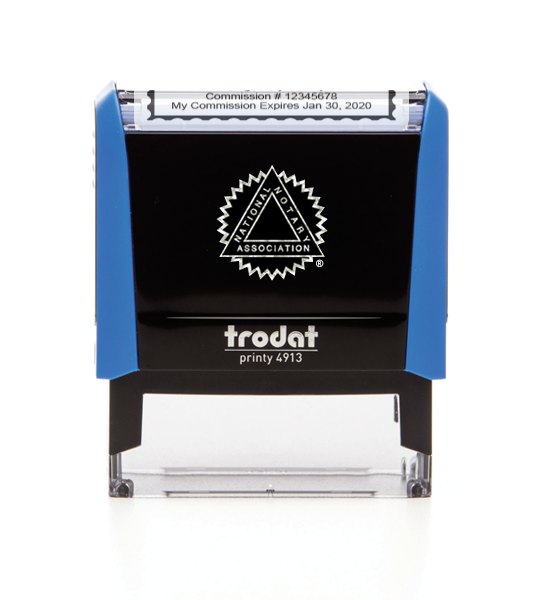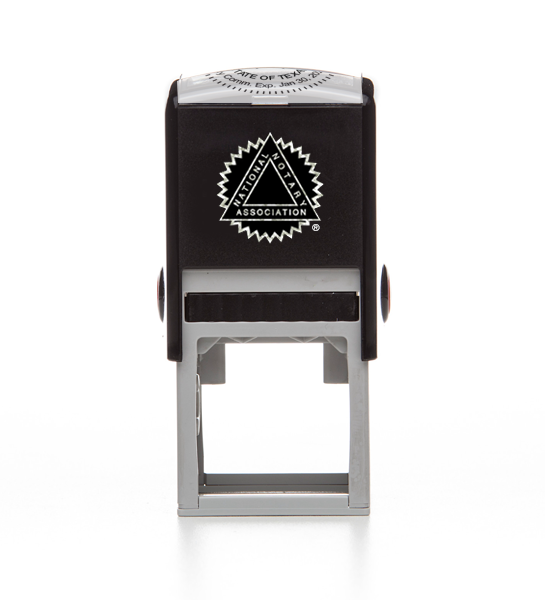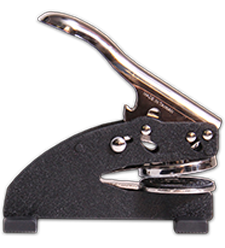In This Guide
What is a Notary seal?
Difference between stamps and embossers
Notary seal stamp requirements
Where to use your Notary seal
How to use a Notary seal
Maintaining your Notary seal stamp
The Notary seal is the impression of the Notary Public inked stamp or crimping embosser. It is used to authenticate the Notary's signature and make the notarial act official. The imprint of the Notary seal contains the Notary Public's commission information and is placed on the certificate at the end of the notarization.
Each state has specific requirements on the size, shape and information included in the seal stamp and guidelines on using embossers.
Difference between Notary seal and embosser
Notary embossers were the traditional method for documenting a notarization before most states adopted the use of rubber-inked stamps.
Nowadays, the term "Notary seal" is often used interchangeably with stamp and embosser. Some states refer to seals as "stamps" while other states use "seal" to reference an embosser.
The primary difference between Notary seals and embossers is their material. Notary seal stamps are inked rubber stamps that are usually rectangular or round in shape.
In contrast, Notary embossers are round metal clamping devices that produce a raised indentation of the Notary Public’s commission information.
 Inked Rubber Stamp - Rectangular (Style Stamp - Rectangular) (Sample Impression)
Inked Rubber Stamp - Rectangular (Style Stamp - Rectangular) (Sample Impression)
 Inked Rubber Stamp - Round (Style Stamp - Round) (Sample Impression)
Inked Rubber Stamp - Round (Style Stamp - Round) (Sample Impression)
 Seal Embosser (Sample Impression)
Seal Embosser (Sample Impression)
Notary seal stamp requirements
In general, both a seal stamp and an embosser contain the Notary Public’s name, state of commission and sometimes the commission expiration date. Find your state’s specific seal requirements.
While states require rubber-inked stamps as the official Notary tool, some states still require a raised embossed seal. In those cases, embossers are commonly used in conjunction with the inked rubber stamp.
If your state doesn’t regulate which tool you use but only requires that embossed seals are photographically reproducible, the NNA offers an embossment inker to meet that requirement.
Where to use the Notary seal
A Notary seal is placed near the Notary’s signature on the certificate. Some certificates contain "L.S.," which is the abbreviation of the term Locus Sigilli, which translates to "place of the seal."
If you see that term on a certificate, place your seal near "L.S." on the certificate and not over the words.
How to use a Notary seal stamp
Knowing how to use a Notary seal stamp properly is key to ensuring the notarized document is accepted by the receiving agency.
- Lay the document on a firm, flat surface for stamping.
- Place the printing surface of your stamp flatly on your document.
- Hold your stamp with your thumb and fingers. Avoid angling the stamp or pressing down with the palm of your hand.
- Quickly press and release.
The image should clearly show all the letters and numbers, the stamp border, and the state seal if included.
Maintaining your Notary seal stamp
Storing your stamp
Place the cover over the seal and lock embossers. Store them at room temperature. Exposing your stamping devices to heat will cause damage and poor impressions, which can cause a document to be rejected.
Not recommended for onion skin or mylar documents.
Cleaning your stamp
Apply and remove a piece of clear tape to the raised letter surface of your stamp to collect dust and dirt. If your stamp includes a removable cover, be sure to replace the cover immediately after using your stamp.
Find the perfect Notary seal stamp or embosser for you.
Back to Top